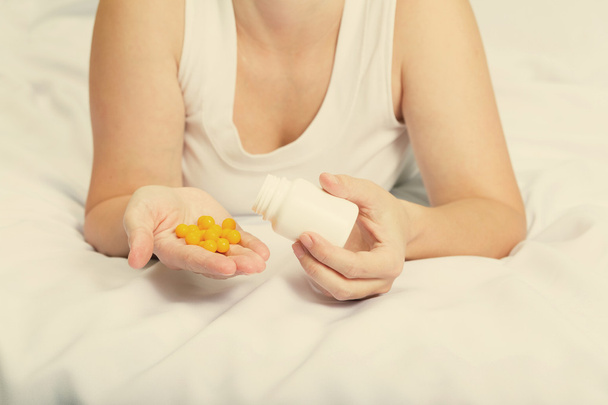Discussing safe sex with your partner is a crucial step in maintaining a healthy and fulfilling relationship. It’s about protecting your physical health, fostering trust, and ensuring that intimacy is enjoyable and worry-free for both partners. While it may seem like an awkward conversation at first, having open and honest discussions can strengthen your connection and lay the foundation for a safer, more satisfying sexual relationship.
In this article, we’ll cover what tools to prepare before sex, how to ensure safety during intimacy, tips for safely incorporating sex toys, and the importance of regular sexual health checkups.
1. Why Safe Sex Discussions Matter
Safe sex is about more than preventing unintended pregnancies or sexually transmitted infections (STIs). It’s about creating a space where both partners feel respected, valued, and confident. Here’s why discussing safe sex is essential:
- Prevention:Protects against STIs and reduces the risk of accidents during intimacy.
- Trust:Builds mutual understanding and a shared sense of responsibility.
- Comfort:Enables both partners to relax and enjoy intimacy without unnecessary stress.
2. Preparing for the Conversation
A. Choose the Right Moment
The best time to discuss safe sex is outside of the bedroom, when both partners are relaxed and open to having a meaningful conversation. Avoid bringing it up during foreplay or the heat of the moment, as it might feel rushed or awkward.
B. Be Clear and Respectful
Approach the topic with confidence and kindness:
- “I care about us being safe and healthy. Can we talk about how to make sure we’re both protected?”
- “I feel more comfortable when we use protection, and I’d love for us to discuss what works best for both of us.”
C. Do Your Research
Before the discussion, educate yourself on:
- Types of protection (e.g., condoms, dental dams, lubricants).
- Proper use and maintenance of sex toys.
- The importance of regular STI testing.
3. Safe Sex Essentials to Prepare
Having the right tools on hand is essential for a safe and enjoyable sexual experience. Here’s what you’ll need:
A. Barrier Methods
Barrier methods protect against STIs and unintended pregnancies:
- Condoms:Both male and female condoms are effective at preventing STIs and providing contraception. Ensure you have a supply of high-quality condoms and check the expiration date before use.
- Dental Dams:Ideal for oral sex, dental dams create a barrier that reduces STI risks while maintaining intimacy.
- Extra Condoms:Always have spares on hand in case of breakage or accidents.
B. Lubricants
Lubricants enhance comfort and reduce the risk of tears or irritation:
- Use water-basedor silicone-based lubricants for safe and effective use with condoms and toys.
- Avoid oil-based lubricants, which can degrade latex condoms and increase the risk of breakage.
C. Emergency Contraception
Having emergency contraception, such as the morning-after pill, readily available can provide peace of mind in case of contraceptive failure.
4.Safety During Intimacy
A. Proper Use of Protection
- Inspect the Barrier:Check condoms or dental dams for damage and ensure they are within the expiration date.
- Application:Pinch the tip of the condom to leave space for semen, then roll it down smoothly. Dental dams should be placed flat over the vulva or anus during oral sex.
- Switch Between Activities:Use a new condom or barrier when switching between oral, vaginal, or anal activities.
- Dispose of Used Barriers Safely:Wrap used condoms or dental dams in tissue and dispose of them in the trash.
B. Preventing Condom Breakage
- Use a generous amount of lubricant to minimize friction and reduce the risk of tearing.
- Avoid using sharp objects or jewelry near the condom during application.
C. Communication During Intimacy
Check in with your partner to ensure that both of you are comfortable and enjoying the experience. If something feels off, pause and address it immediately.
5. Safely Incorporating Sex Toys
Sex toys can add excitement and variety to your sex life, but using them safely is essential for a positive experience.
A. Choose High-Quality Toys
Purchase toys made from materials that are not harmful to the body, such as sex toys made from medical-grade silicone like Rose Toys , which feel the same as if they were touching human skin. Avoid porous materials that may harbor bacteria.
B. Clean Toys Properly
- Wash toys before and after each use with warm water and a mild, unscented soap or a toy-safe cleaner.
- For toys with electronic components, ensure they are waterproof before submerging them in water.
C. Use Toys with Protection
- When sharing toys with a partner, cover them with a condom to prevent the spread of bacteria or STIs.
- Change the condom when switching between partners or activities.
D. Introduce Toys Gradually
If using toys with a partner, communicate openly about what you’d like to try. Start with smaller, simpler toys to gauge comfort levels before exploring more advanced options.

6. Regular Sexual Health Checkups
Routine sexual health checkups are a critical part of maintaining a safe and satisfying sex life. Here’s why and how to prioritize them:
A. Why Testing Matters
- Early Detection:Many STIs, such as chlamydia and gonorrhea, are asymptomatic but can cause long-term health issues if left untreated.
- Peace of Mind:Regular testing ensures that both partners can enjoy intimacy without fear or anxiety.
- Shared Responsibility:Testing together reinforces the importance of mutual care.
B. When to Get Tested
- Test before starting a new sexual relationship or if you or your partner have had other partners.
- If you’re in a monogamous relationship, testing once a year is sufficient.
- If you have multiple partners or engage in non-monogamous relationships, test every 3-6 months.
C. Encourage Joint Testing
Suggest visiting a clinic together:
- “I think it would be a good idea for both of us to get tested. It’s just a way to take care of each other.”
- Testing together can strengthen trust and show mutual commitment to safety.
7. Reap the Benefits of Safe Sex
Prioritizing safety doesn’t just protect your health—it enhances your overall sexual experience:
- Confidence:Knowing you’re protected allows you to focus on pleasure.
- Trust:Open communication builds a stronger emotional connection.
- Long-Term Health:Preventing STIs and unwanted pregnancies ensures a brighter future.
Final Thoughts
Discussing and practicing safe sex is a sign of respect and care—for yourself and your partner. By preparing for these conversations, equipping yourself with the right tools, and committing to regular health checkups, you can enjoy intimacy confidently and responsibly.
Remember, a safe and healthy sex life is about more than protection—it’s about creating a relationship rooted in trust, communication, and mutual satisfaction. Take the initiative to have these conversations and invest in your sexual well-being. It’s a choice that benefits both your body and your heart.

